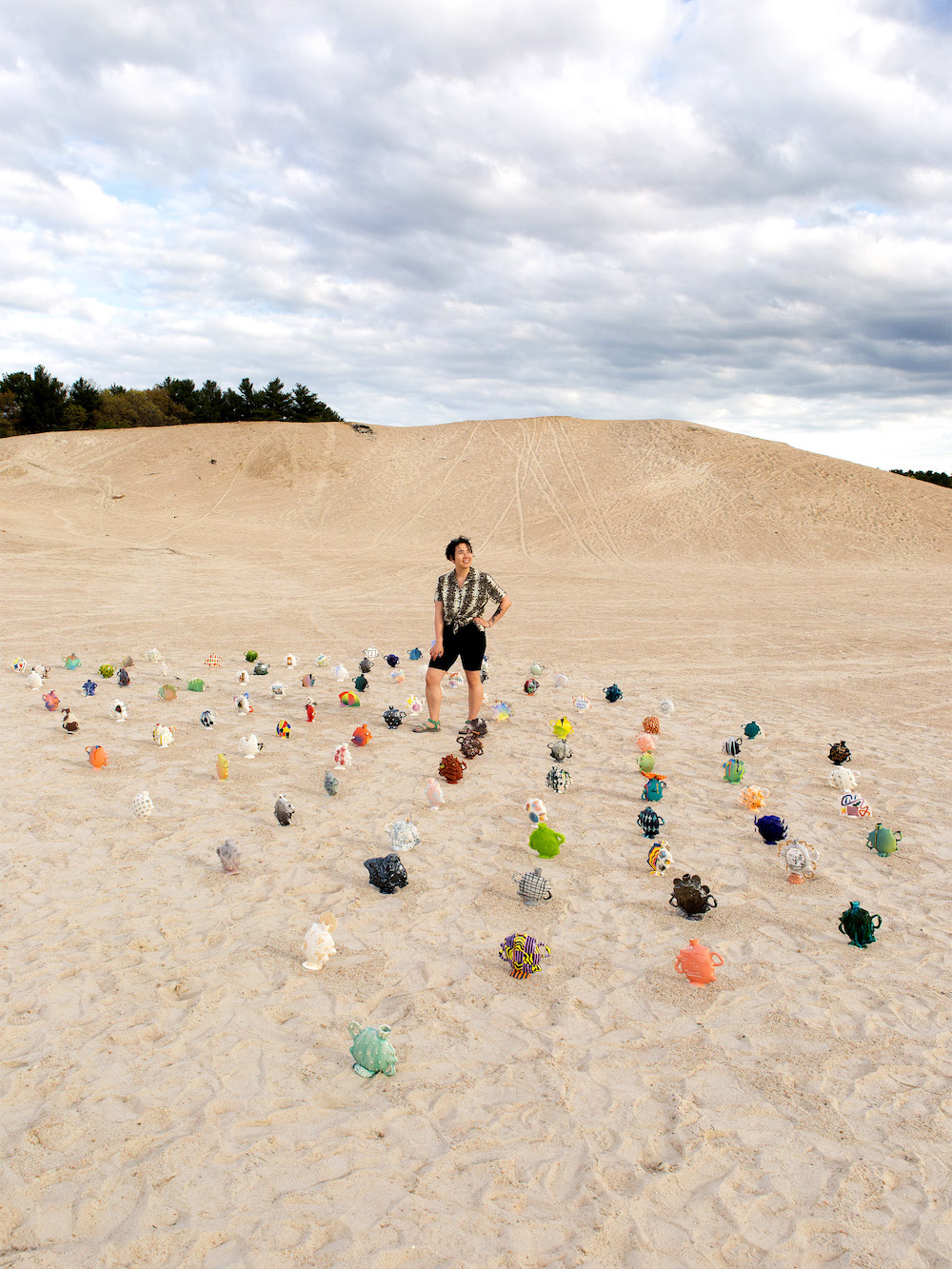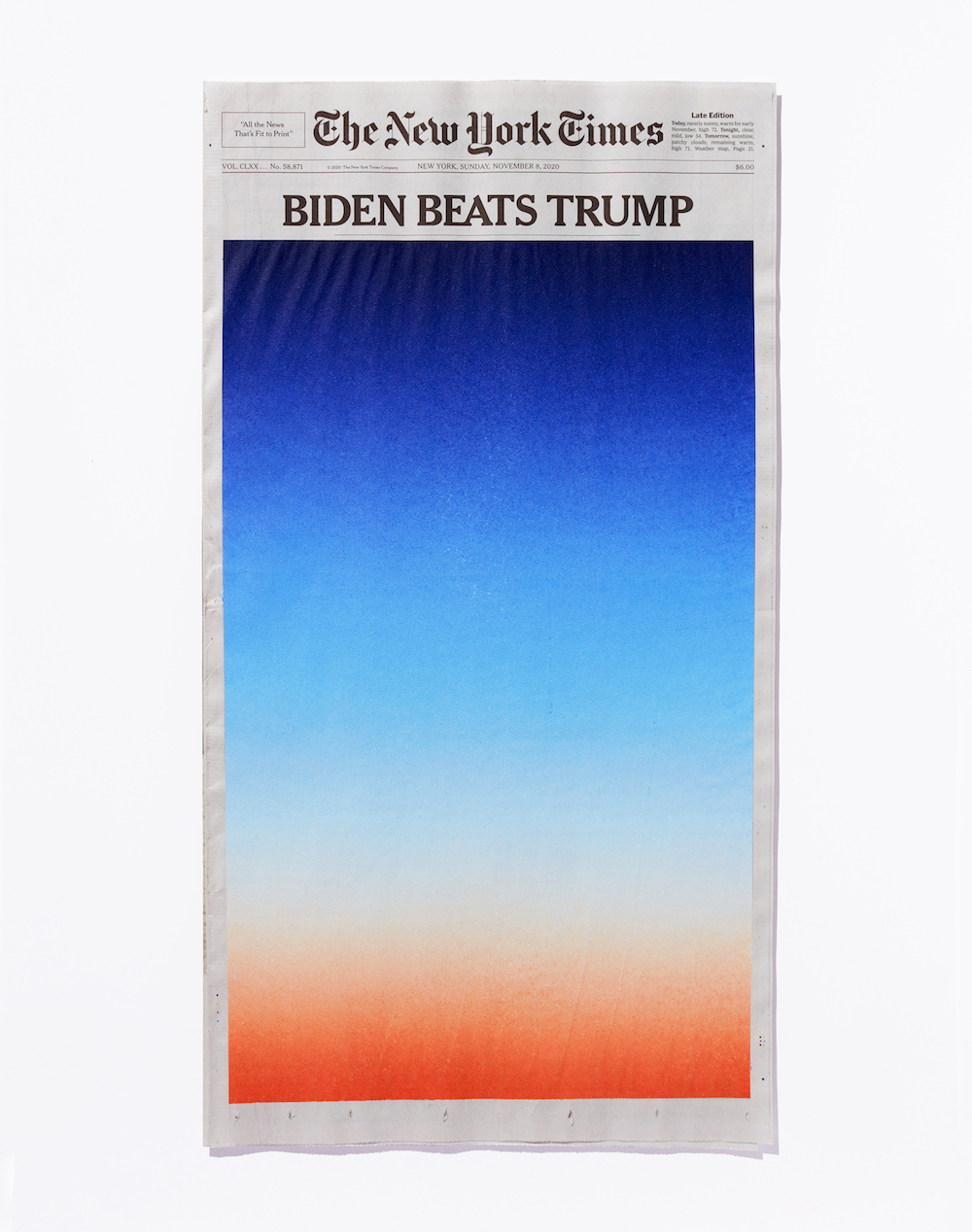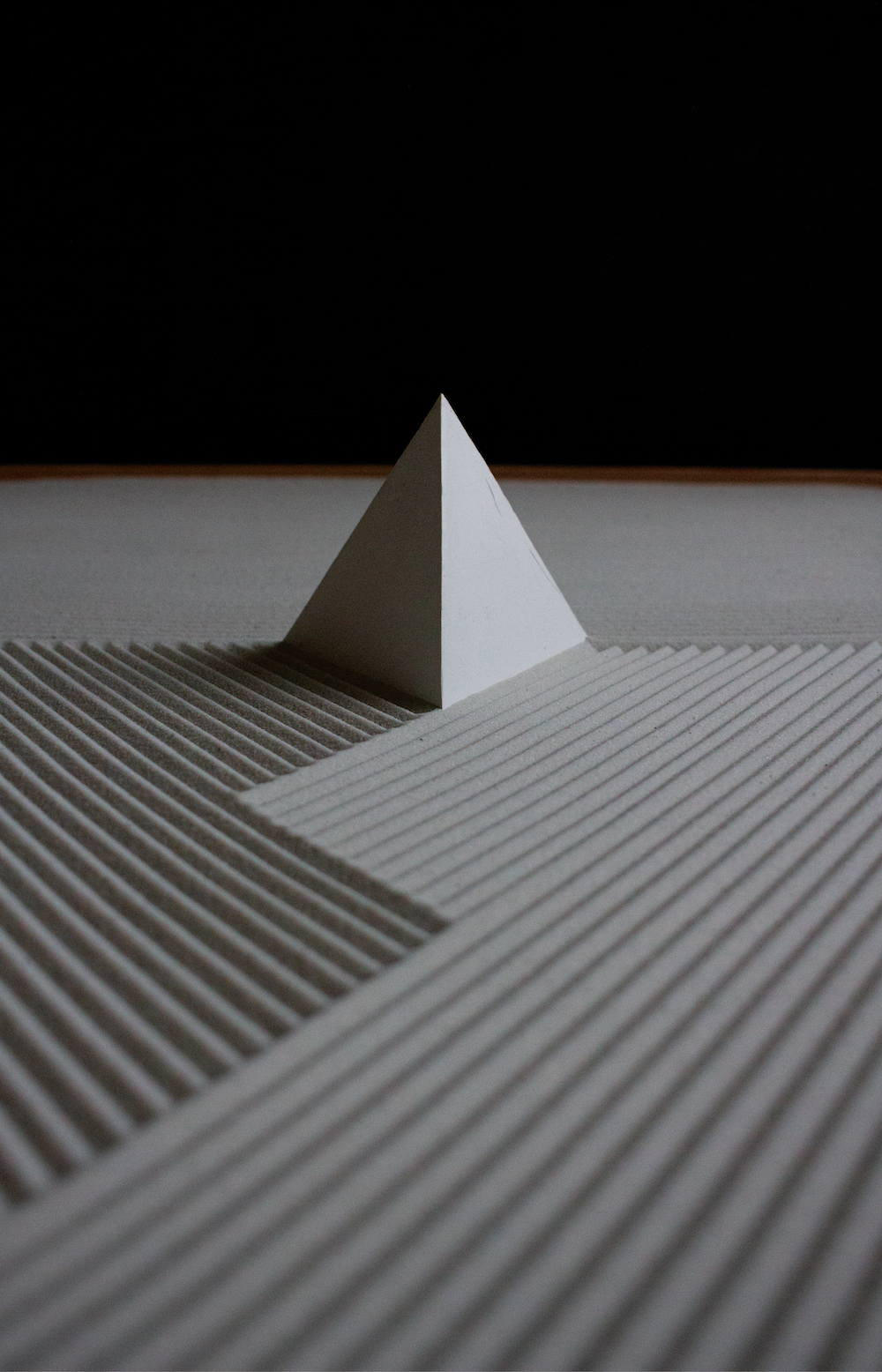Jolie Ngo’s interest in clay begins and continues on Instagram. That’s where we first encountered her futuristic pieces treated with a targeted flourish of sprayed or dripped glaze. Making vessels that are so flat they no longer function, she was part of the “Super Group” exhibition from Superhouse late last year, and “Shelter in Place” show last summer.
Ngo’s experimentation with 3-D printing and her eye for color and gradient are made for the Internet, a space where, as she describes it, her work flourishes. A graduate of RISD’s ceramics department and current MFA candidate at Alfred University in New York, Ngo spoke with Whitewall about experimenting with technique, material, and memory.
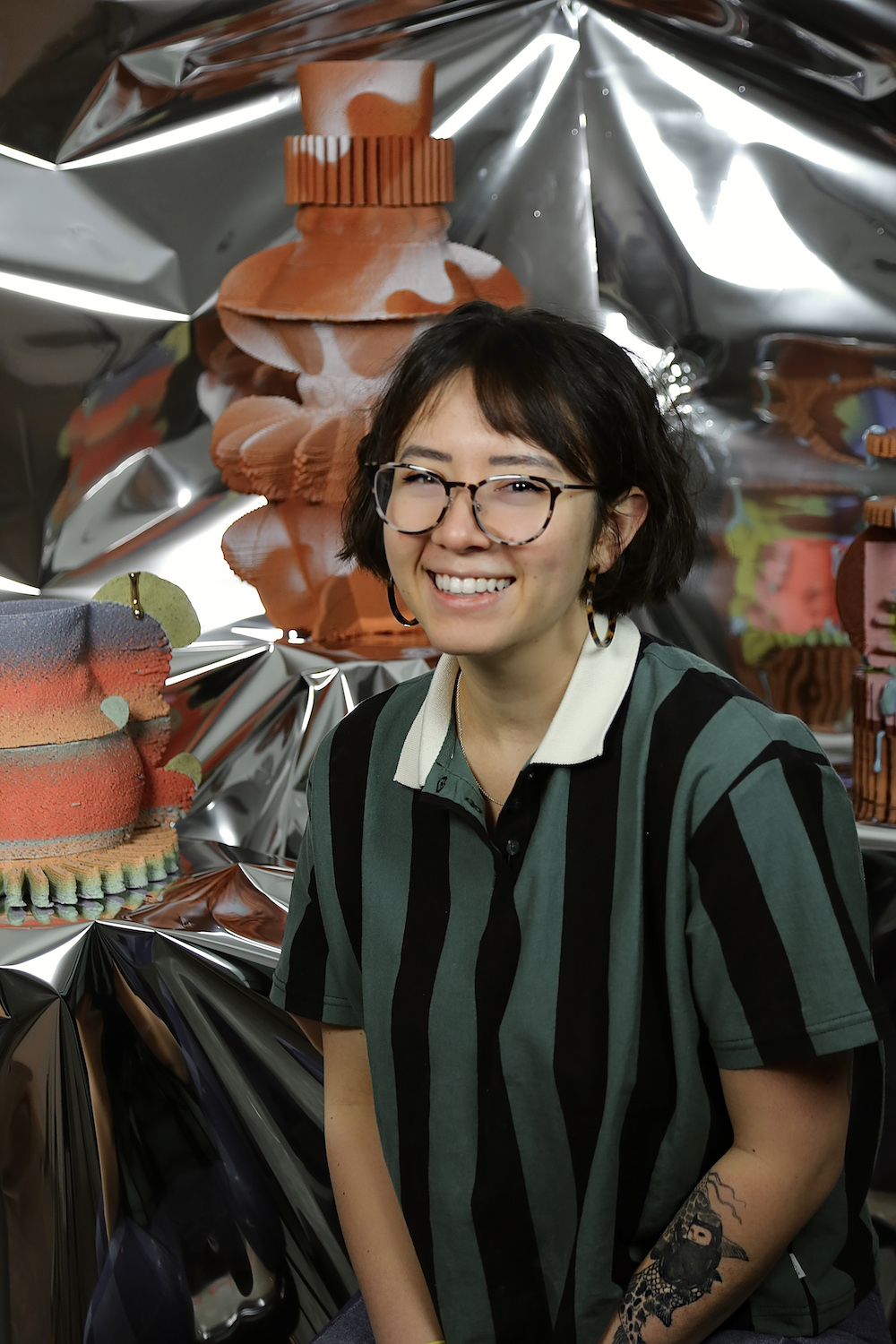
Jolie Ngo, courtesy to the artist.
WHITEWALL: How did you first become interested in working with clay?
JOLIE NGO: I started at RISD in 2014, and I originally applied to be in the sculpture department. I went into the sculpture department, and I really did not like it. I took two years off from school, and during the last year of my time off, on a whim, thought I should try getting into ceramics.
I had been exposed to these ceramic objects that aren’t pottery. It caught my attention, these lumpy, hand-build gloopy, whatever. It was so against the narrative of craft. I DM’ed Brian Rochefort, @energygloop on Instagram—he makes these gloopy crater landscape lava-looking pieces—and asked him if I could come and work for him for a summer in L.A. He just said, “Yes.” I don’t really know why, looking back. I didn’t have any experience with ceramics at the time. But I went out there and I really fell in love with working with the material, especially in the way he was working with it. And it inspired me to come back to school in the ceramics department, January 2017.
WW: You’ve recently started to incorporate 3-D printing into your ceramics practice. How did that start?
JN: I was very anti 3-D-printed ceramics for a really long time. Mostly because they rely on the fact that they are 3-D printed and they can be really gimmicky. The technique and technology is so new, and people don’t really know how to glaze 3-D-printed ceramic work.
The ceramics department at RISD bought a potter bot. I was around and I printed it and immediate fell in love with 3-D printing clay. I realized the true potential of it after I glazed something for the first time. My surface treatment translates so well to the 3-D-printed surface.
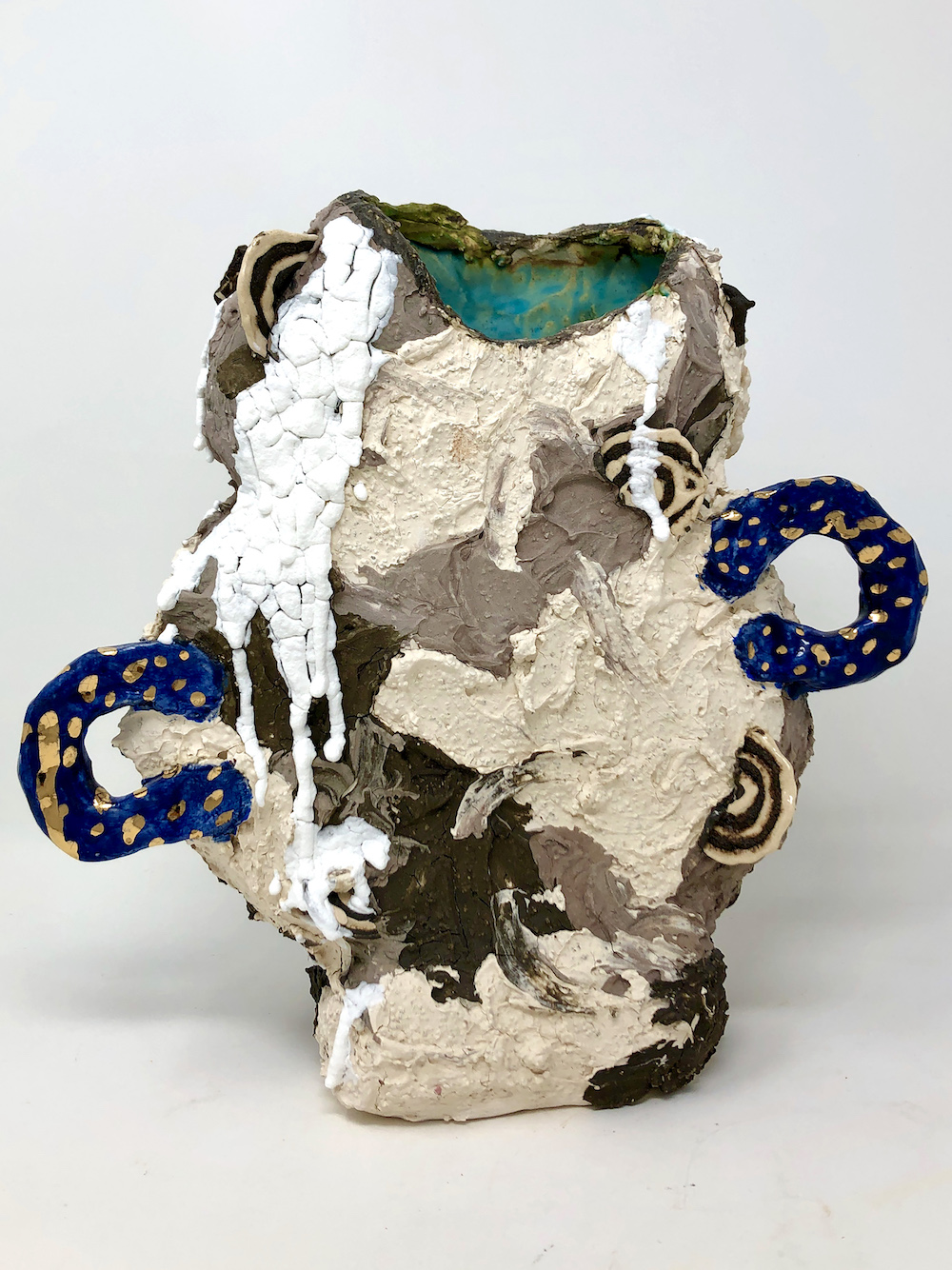
Jolie Ngo, “Flat Vases,” courtesy to the artist.
WW: Speaking of surface treatment, in your artist statement you talk about taking a humble vessel and dressing it up. How do you like to dress it up?
JN: I really am so into spraying airbrushing glaze on, mostly because I am really interested in this post-Internet aesthetic and the hyper pots on Instagram. I just feel like gradients translate really well in pictures. I started utilizing stencils, mostly just hand-cut stencils to get more variation in the surface so it’s not just one linear gradient. And I am a big fan of the gloop glaze, but maybe not to the extreme that other people are a fan. I always incorporate drips in my work, but a lot more controlled than people typically who use that glaze use it.
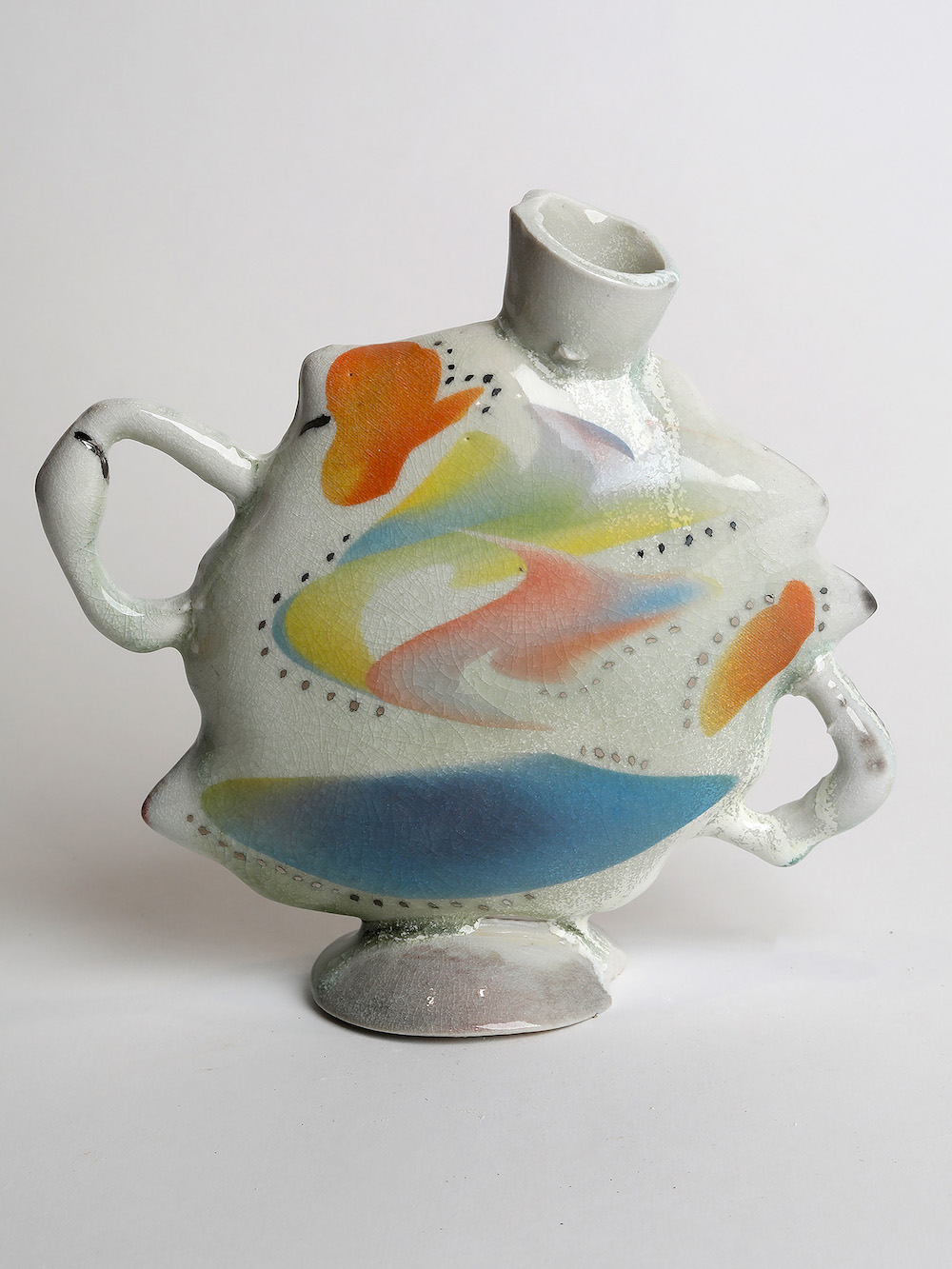
Jolie Ngo, “100 Vases,” courtesy to the artist.
WW: What was the inspiration for your “100 Vases” series?
JN: I had gotten that idea from my therapist. I’m three years sober now, and the first year of your sobriety you’re supposed to be single and not date so you can focus on getting clean and staying clean. I was talking to her about how I was struggling to put myself back out there. It’s hard to get out of that state of mind. She gave me this homework to go on 100 dates—go on two dates a week. It doesn’t have to be crazy, going for a walk or coffee. I tried to do that, but I was like, “I don’t want to do this. I don’t want to go on 100 dates.”
At the same time I was thinking about what I wanted to make for my thesis, and I was like, “I can make 100 vases.” That’s something I could do realistically. So I took that approach to the 100 dates and put it into ceramics instead. Instead of two dates a week, I was casting two vases a day.
I was thinking of how the vessel often for people mimics the body or the self. I was thinking of the vessel as referring to a memory of my past self before I became sober. And every time I would revisit those memories they would change or be altered in a different way. Which I felt like translated through the different surface manipulations on each vessel.
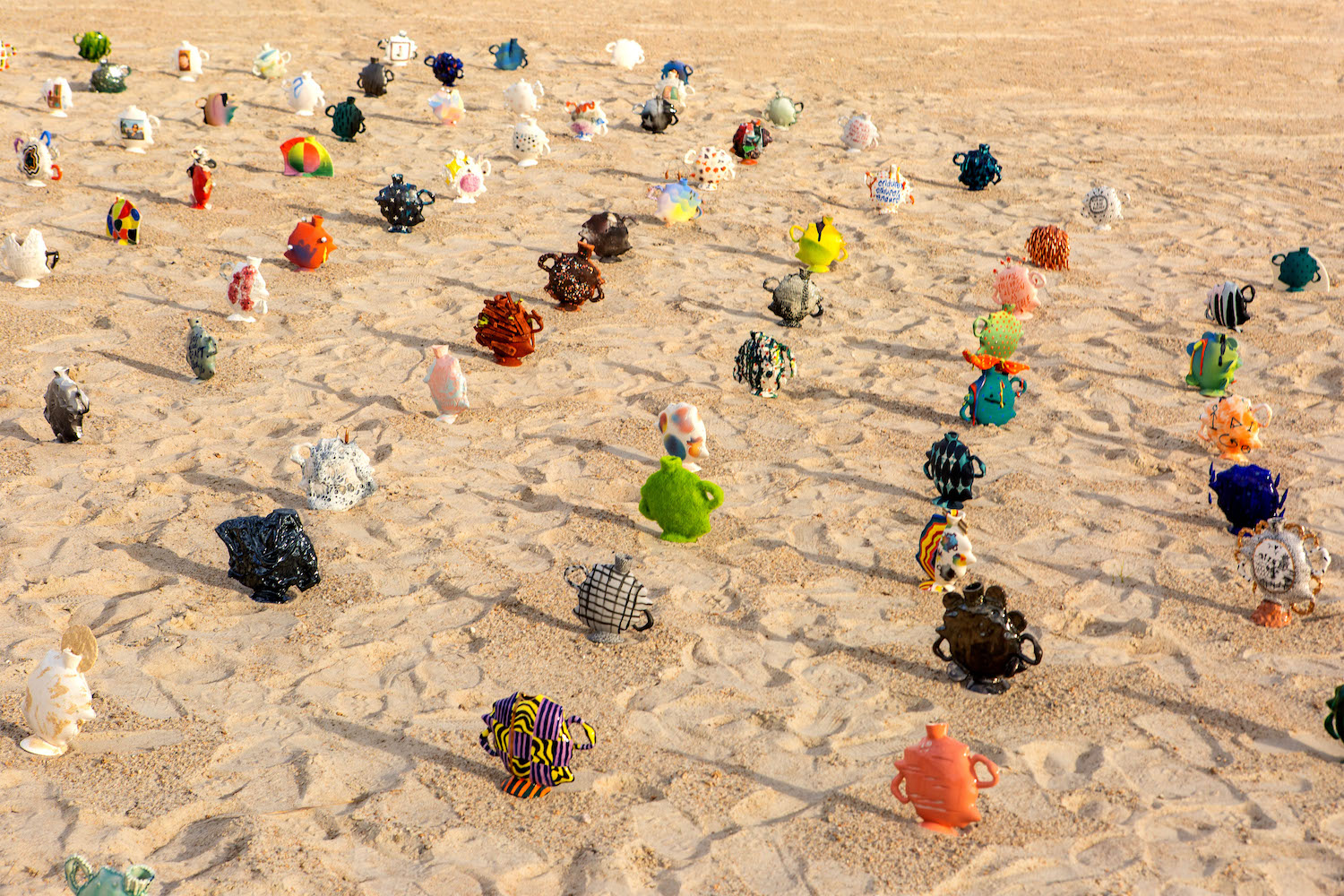
Jolie Ngo, “100 Vases,” photo by Rena Rong, courtesy to the artist.
WW: Your journey with ceramics was inspired by what you were seeing on Instagram. What role does Instagram play now in your practice?
JN: Instagram is a really big part of my practice. The reason I started making those flat vessels was I was responding to this article by Glenn Adamson called “The Rise of the Hyper Pot,” which is about ceramic objects that perform really well on Instagram. A lot of my work is responding to that, which is why I mimic digital effects. My work lives online. Even before the pandemic happened, that’s the space that it flourishes. And it’s been great to connect with people in the ceramics community that way.
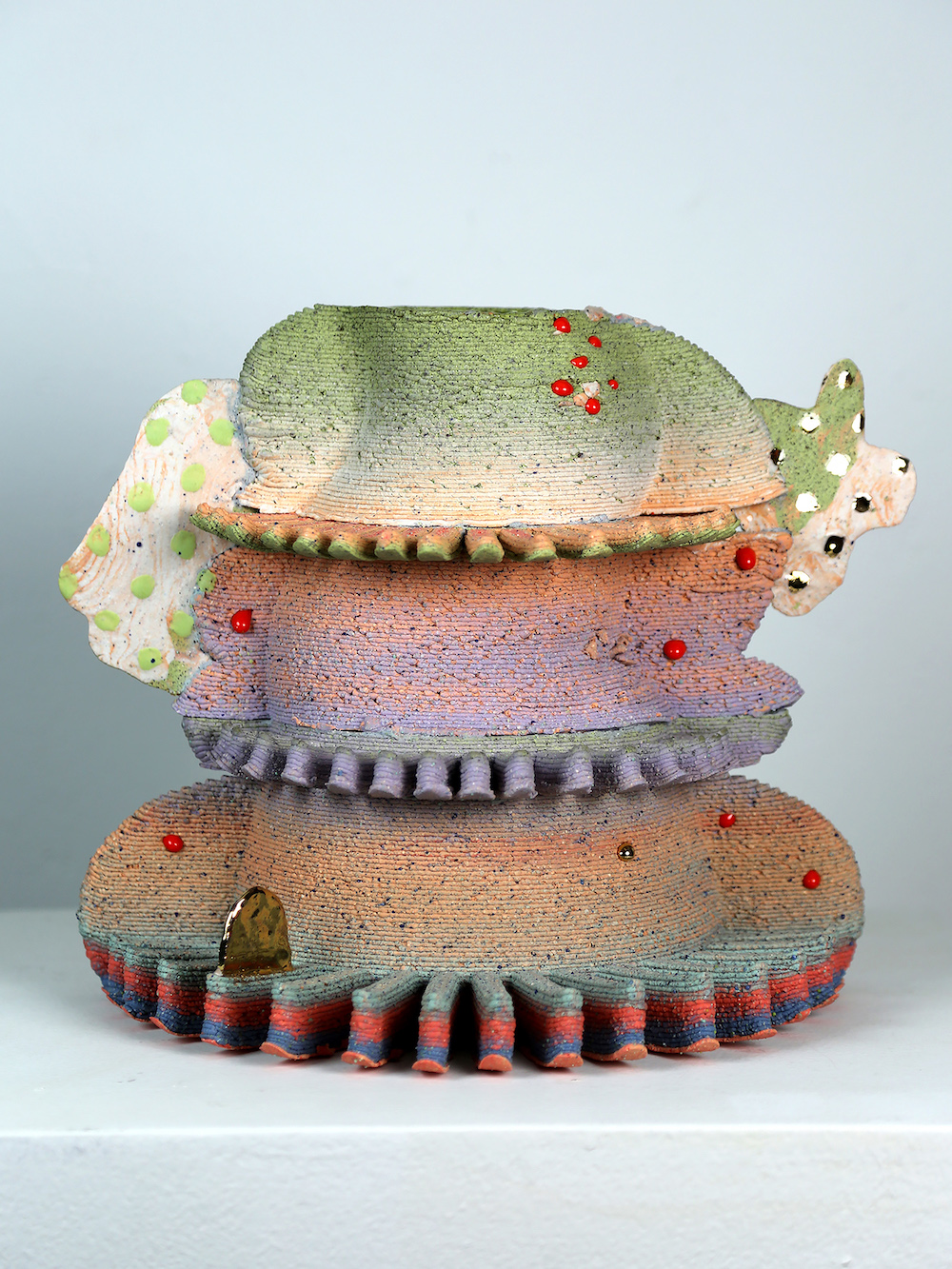
Jolie Ngo, “Skirt Vase,” courtesy to the artist.
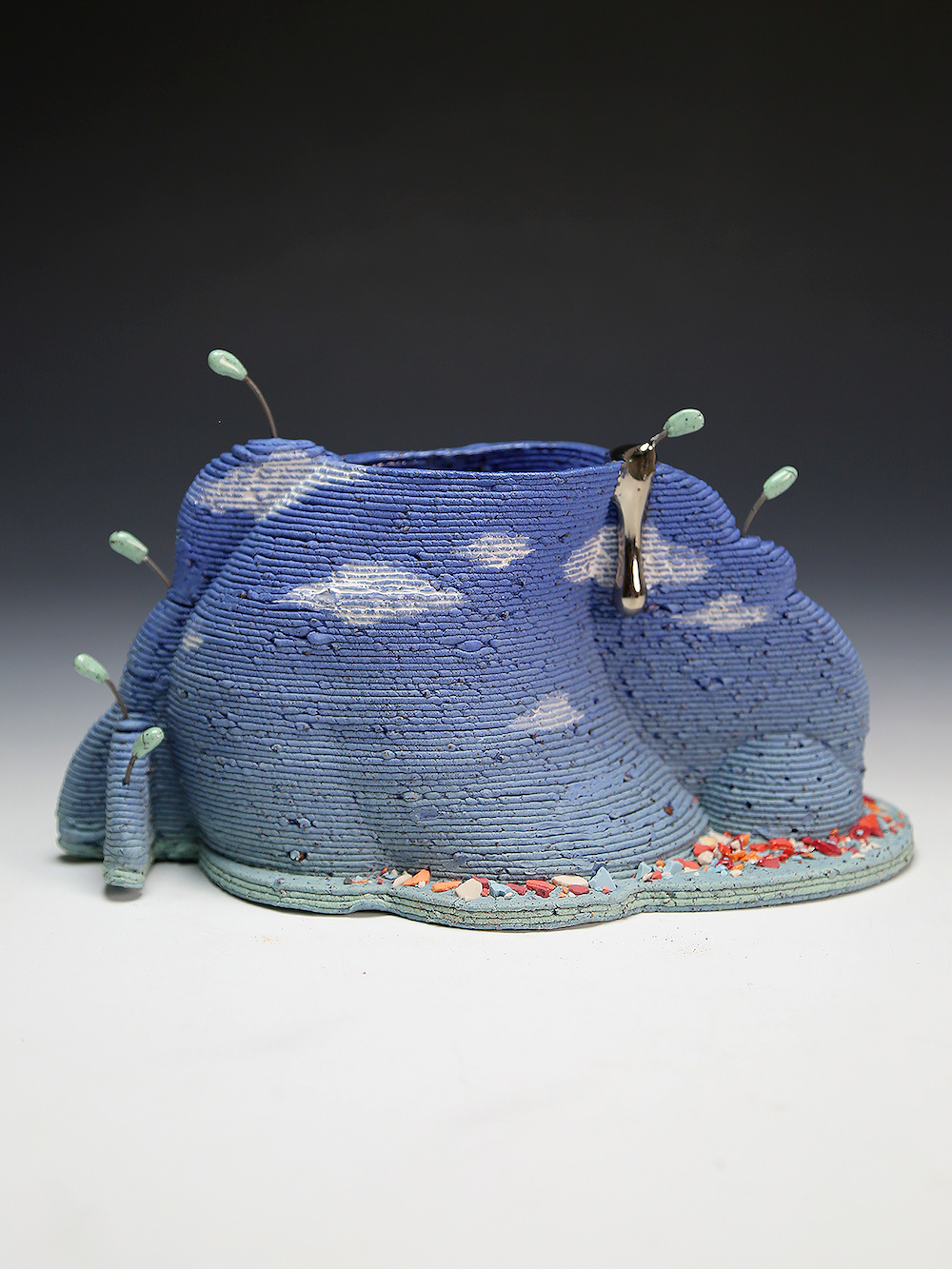
Jolie Ngo, “Memory Palace,” courtesy to the artist.


